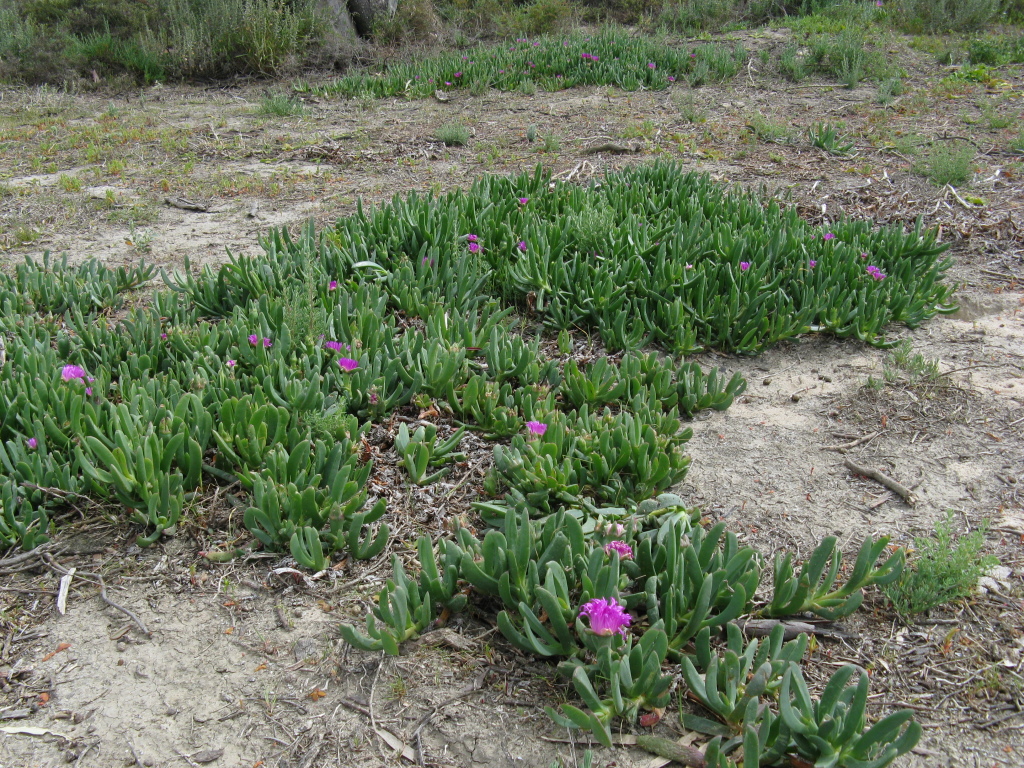Carpobrotus rossii
(Haw.) Schwantes KarkallaStems to c. 1 m long or more, 3–11 mm diam. Leaves 3.5–10 cm long, 6–11 mm thick, usually distinctly incurved, green to glaucous, usually thicker than wide near the middle, faces usually slightly convex, the keel smooth or crenulate on the incurved apical part. Flowers 3.5–5.5 cm diam.; pedicel mostly 1–3 cm long; calyx tube turbinate or oblong-turbinate, strongly compressed and acutely 2-angled toward base; sepals 5, rarely 4, the 2 longest 12–25 mm long, keels smooth or crenulate; petaloid staminodes c. 100–200, 20–27 mm long, in 2 or 3 series, light purple merging to white at and near base, streaked brown close to the midline when dry; stamens c. 100–250, in 3–4 series; ovary flat to convex on top; styles 6–10, free. Fruit globose-ellipsoid, slightly compressed, weakly 2-angled, 1.5–2.5 cm long. Flowers most of year.
LoM, MuM, Wim, GleP, Brid, VVP, GipP, OtP, WaP, CVU, DunT, EGL, WPro, OtR, Strz. Also ?WA, SA, Tas. Rather common on dunes and cliffs along the Victorian coastline. Records from inland sites (e.g. Wando Vale) are based upon specimens of doubtful origin at MEL.
See note under Carpobrotus aff. rossii (N.W. Victoria).
Walsh, N.G. (1996). Aizoaceae. In: Walsh, N.G.; Entwisle, T.J., Flora of Victoria Vol. 3, Dicotyledons Winteraceae to Myrtaceae, pp. 105–119. Inkata Press, Melbourne.
 Spinning
Spinning


